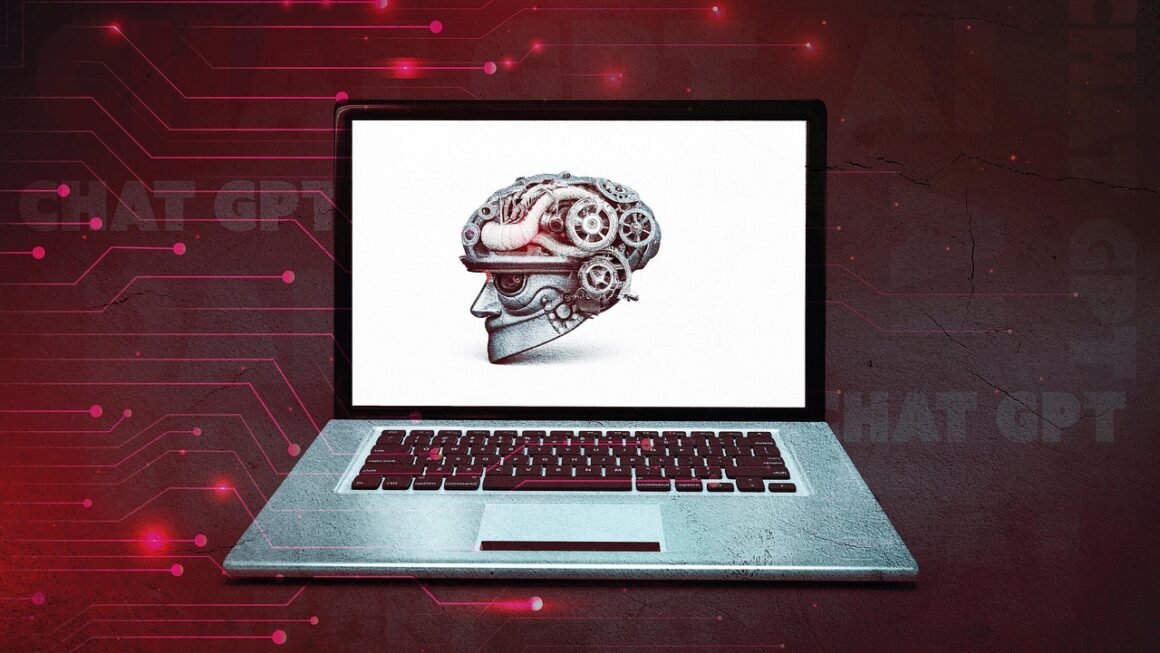Voice recognition technology, once a futuristic fantasy confined to science fiction, is now an everyday reality shaping how we interact with our devices and the world around us. From dictating emails and controlling smart home appliances to powering sophisticated customer service bots and driving accessibility features, voice recognition has rapidly evolved from a novelty into a vital tool for productivity, convenience, and inclusion. This blog post will delve into the intricacies of voice recognition technology, exploring its underlying principles, diverse applications, and future potential.
Understanding Voice Recognition Technology
What is Voice Recognition?
Voice recognition, also known as speech recognition, is the ability of a machine or program to identify words spoken aloud and convert them into a machine-readable format. This process involves complex algorithms and models that analyze acoustic signals, identify phonemes (the basic units of sound), and compare them to a vast database of known words and phrases. Unlike voice authentication, which focuses on verifying the speaker’s identity, voice recognition aims to transcribe spoken language accurately.
- Voice recognition aims to understand what is being said.
- Voice authentication aims to identify who is speaking.
How Voice Recognition Works: A Simplified Overview
The process of voice recognition can be broken down into several key stages:
- Acoustic Modeling: The spoken audio is captured and analyzed to extract acoustic features, such as frequency, amplitude, and duration. This involves converting the analog sound waves into a digital signal.
- Phoneme Recognition: The extracted acoustic features are then used to identify phonemes, the smallest units of sound that distinguish one word from another (e.g., the “b” in “bat”).
- Language Modeling: A language model predicts the probability of a sequence of words occurring in a specific order. This helps the system to disambiguate between words that sound similar and to improve overall accuracy.
- Decoding: The system combines the acoustic and language models to generate a ranked list of possible transcriptions. The transcription with the highest probability is selected as the final output.
Key Components of Voice Recognition Systems
Modern voice recognition systems rely on several key components:
- Microphones: Capture the audio signal. The quality of the microphone significantly impacts accuracy. Noise-canceling microphones are preferred for environments with background noise.
- Analog-to-Digital Converters (ADCs): Convert the analog audio signal into a digital format that can be processed by the computer.
- Speech Processing Software: Contains the algorithms and models that analyze the audio signal and perform the recognition process. Examples include Google’s Speech-to-Text API, Microsoft’s Azure Speech Services, and open-source solutions like Kaldi.
- Training Data: Large datasets of spoken language are used to train the acoustic and language models, enabling the system to learn to recognize different accents, speaking styles, and vocabulary. The more training data, generally the more accurate the system.
Applications of Voice Recognition Technology
Voice Assistants and Smart Home Devices
One of the most visible applications of voice recognition is in voice assistants like Amazon Alexa, Google Assistant, and Apple Siri. These assistants allow users to control smart home devices, set reminders, play music, answer questions, and perform a wide range of other tasks using only their voice. For example, you can say, “Alexa, turn on the living room lights” or “Hey Google, what’s the weather forecast?”. According to Statista, the global voice assistant market is projected to reach $30 billion by 2025, highlighting its growing adoption and importance.
Dictation and Transcription
Voice recognition software has revolutionized dictation and transcription, making it easier and faster to create documents, emails, and notes. Professionals in fields such as law, medicine, and journalism often use dictation software to streamline their workflow and improve productivity. Dragon NaturallySpeaking is a popular example of dictation software specifically designed for professional use. Its advanced algorithms and vocabulary customization options allow for highly accurate transcription, even with complex terminology.
- Doctors can dictate patient notes directly into electronic health records.
- Lawyers can draft legal documents and correspondence more efficiently.
- Journalists can quickly transcribe interviews and create articles.
Customer Service and Call Centers
Voice recognition is also being used to automate customer service interactions in call centers. Interactive Voice Response (IVR) systems use voice recognition to understand customer requests and route them to the appropriate agent or provide automated solutions. This can improve customer satisfaction, reduce wait times, and lower operational costs. AI-powered chatbots using voice recognition can handle simple inquiries, resolve basic issues, and provide 24/7 support.
Accessibility Features
Voice recognition plays a crucial role in providing accessibility for individuals with disabilities. It enables people who are unable to use a keyboard or mouse to control their computers and devices using their voice. This can significantly improve their independence and quality of life. Speech-to-text software allows individuals with limited mobility or dexterity to communicate effectively. Furthermore, screen readers with voice control can provide access to digital content for people with visual impairments.
- Voice control for wheelchairs and other assistive devices.
- Speech-to-text software for individuals with motor impairments.
- Hands-free control of computers and mobile devices.
Automotive Industry
Voice recognition is becoming increasingly integrated into vehicles, allowing drivers to control various functions without taking their hands off the wheel or their eyes off the road. Drivers can use voice commands to make phone calls, navigate, adjust the temperature, and control the entertainment system, enhancing safety and convenience. Car manufacturers are also using voice recognition to personalize the driving experience, allowing drivers to create custom profiles and preferences.
Challenges and Limitations
Accuracy and Reliability
Despite significant advancements, voice recognition technology is not perfect. Accuracy can be affected by various factors, including background noise, accents, and speaking styles. Systems trained on a specific accent may struggle to understand speakers with different accents. Complex or uncommon vocabulary can also pose challenges. Ongoing research and development efforts are focused on improving the robustness and accuracy of voice recognition systems in diverse environments and with a wide range of speakers.
Privacy and Security Concerns
The use of voice recognition raises privacy and security concerns, as it involves the collection and storage of personal voice data. Users need to be aware of how their voice data is being used and protected by companies and organizations that provide voice recognition services. Data encryption, anonymization techniques, and strict data privacy policies are essential to safeguard user privacy. Furthermore, voice recognition systems can be vulnerable to security threats, such as voice spoofing, where attackers use synthetic or recorded voices to impersonate legitimate users. Multifactor authentication methods and anti-spoofing technologies are being developed to mitigate these risks.
Language Support
While voice recognition is available in many languages, the level of support and accuracy can vary significantly. Some languages have larger training datasets and more advanced language models than others, resulting in better performance. Efforts are underway to expand language support and improve accuracy for less commonly spoken languages.
Contextual Understanding
Voice recognition systems often struggle with understanding the context of spoken language, which can lead to misinterpretations and errors. Humans are able to infer meaning from the surrounding words, tone of voice, and other contextual cues. Improving contextual understanding is a key area of research in natural language processing (NLP) and artificial intelligence (AI). Techniques such as sentiment analysis and named entity recognition are being used to enhance the ability of voice recognition systems to understand the meaning and intent behind spoken language.
The Future of Voice Recognition
Advancements in AI and Deep Learning
The future of voice recognition is closely tied to advancements in AI and deep learning. Deep learning models, such as recurrent neural networks (RNNs) and transformers, have significantly improved the accuracy and robustness of voice recognition systems. These models are capable of learning complex patterns in speech and adapting to different accents and speaking styles. Further advancements in AI are expected to lead to more natural and intuitive voice interfaces, as well as improved contextual understanding and error correction.
Integration with Other Technologies
Voice recognition will become increasingly integrated with other technologies, such as virtual reality (VR), augmented reality (AR), and the Internet of Things (IoT). In VR and AR environments, voice control will provide a seamless and intuitive way to interact with virtual objects and environments. In the IoT, voice recognition will enable users to control a wide range of devices and appliances with their voice, creating a more connected and automated world. Imagine controlling a factory assembly line, remotely, with voice commands issued through a mixed-reality headset.
Personalized Voice Experiences
Future voice recognition systems will be able to provide more personalized experiences by learning individual user preferences, habits, and speaking styles. Systems will be able to adapt to the user’s accent, vocabulary, and tone of voice, resulting in more accurate and natural interactions. Personalized voice assistants will be able to anticipate user needs and provide proactive recommendations, making them even more helpful and convenient.
Ethical Considerations
As voice recognition becomes more pervasive, it is important to address the ethical considerations surrounding its use. Ensuring fairness, transparency, and accountability in voice recognition systems is crucial to prevent bias and discrimination. Developing robust data privacy policies and security measures is also essential to protect user data and prevent misuse. Open discussions and collaborations between researchers, developers, policymakers, and the public are needed to ensure that voice recognition technology is used responsibly and ethically.
Conclusion
Voice recognition technology has come a long way, transforming how we interact with machines and opening up new possibilities for productivity, convenience, and accessibility. While challenges remain in terms of accuracy, privacy, and ethical considerations, ongoing advancements in AI and deep learning promise to further enhance the capabilities and applications of voice recognition in the years to come. From controlling smart home devices to powering customer service bots and driving accessibility features, voice recognition is poised to play an increasingly important role in our digital lives. It’s a technology to watch, as its development and integration continue to redefine the boundaries of human-computer interaction.



